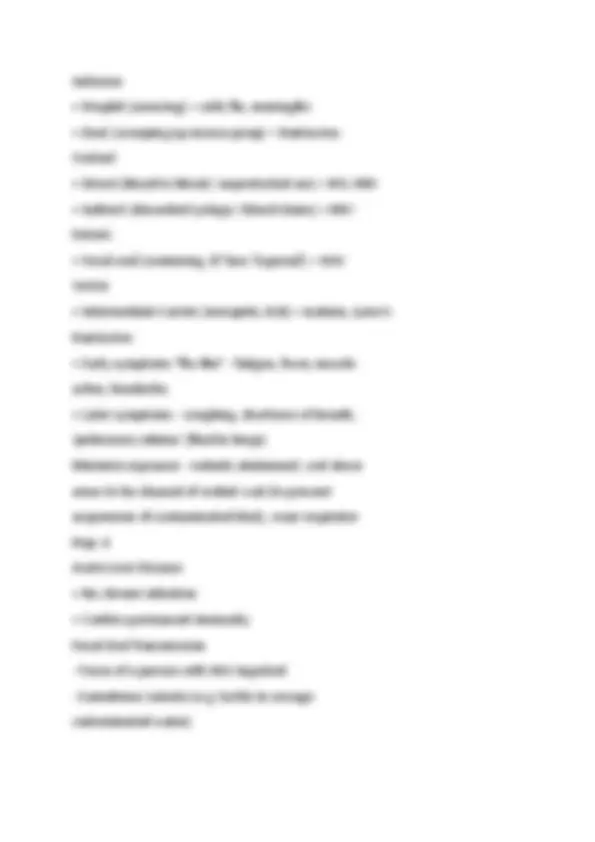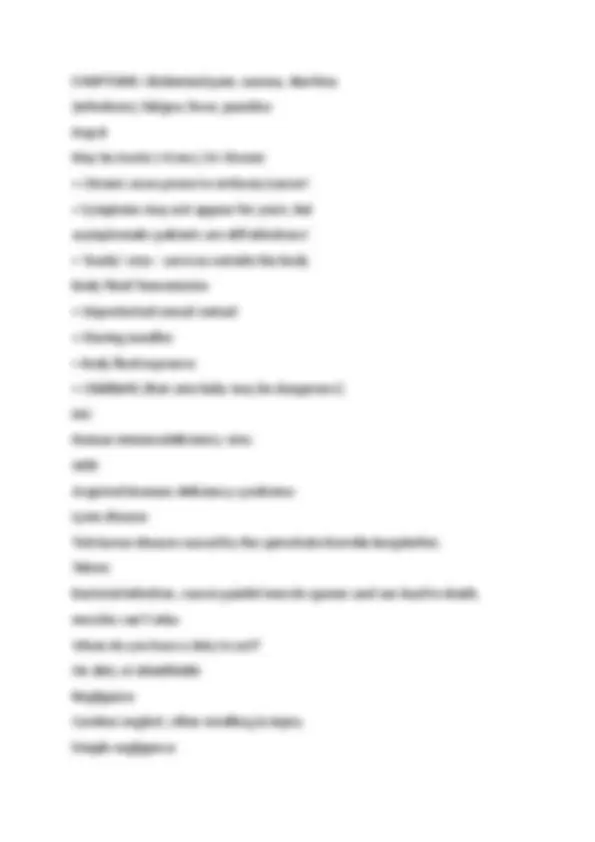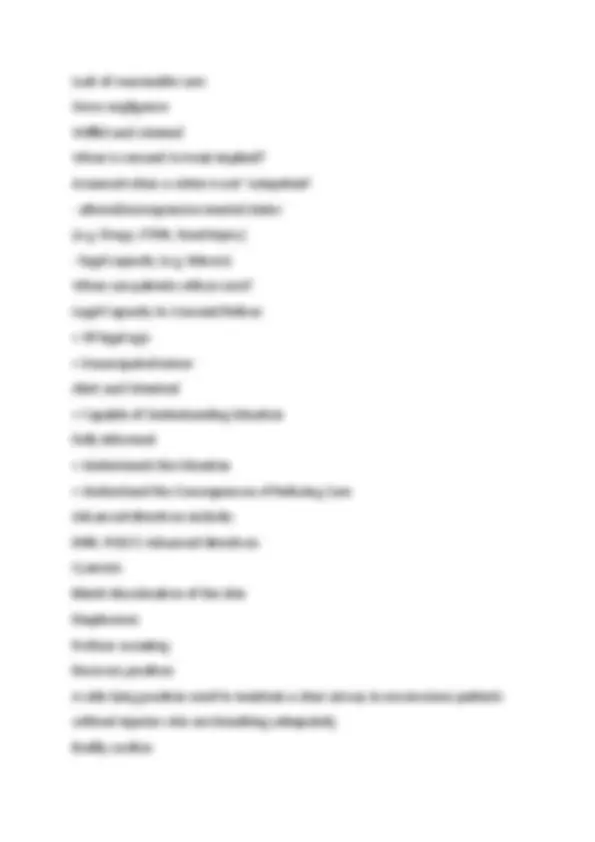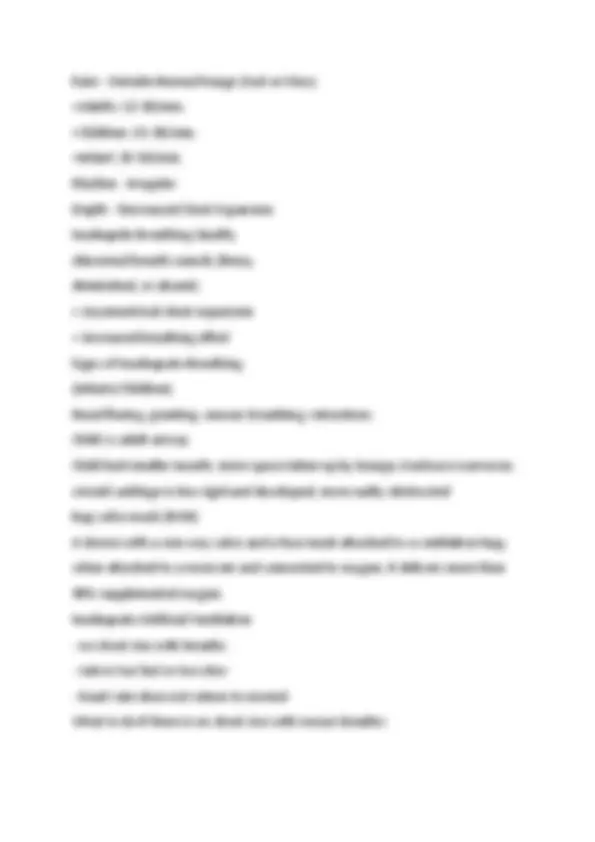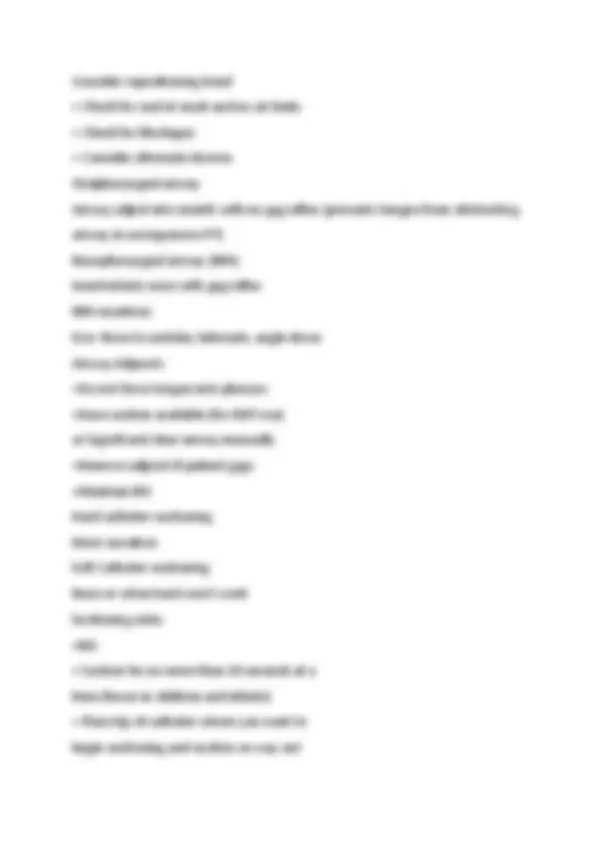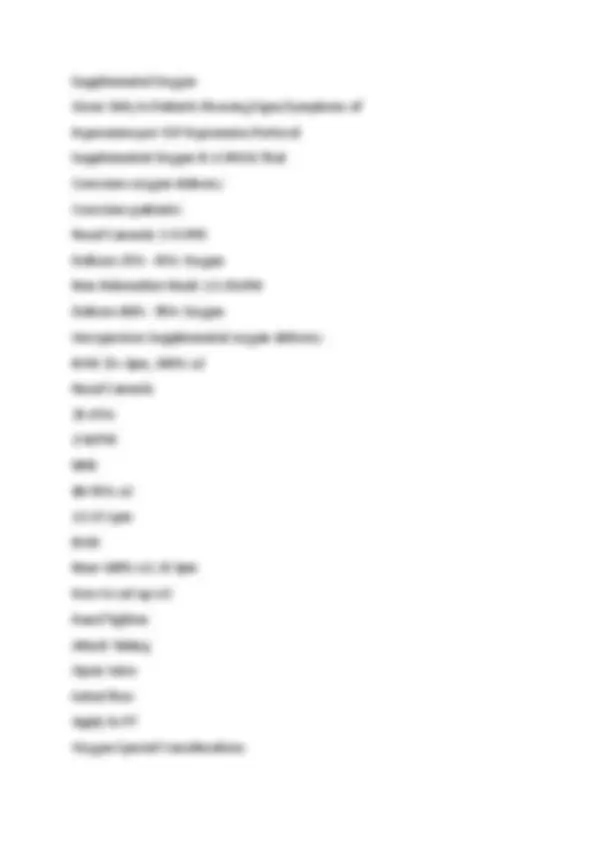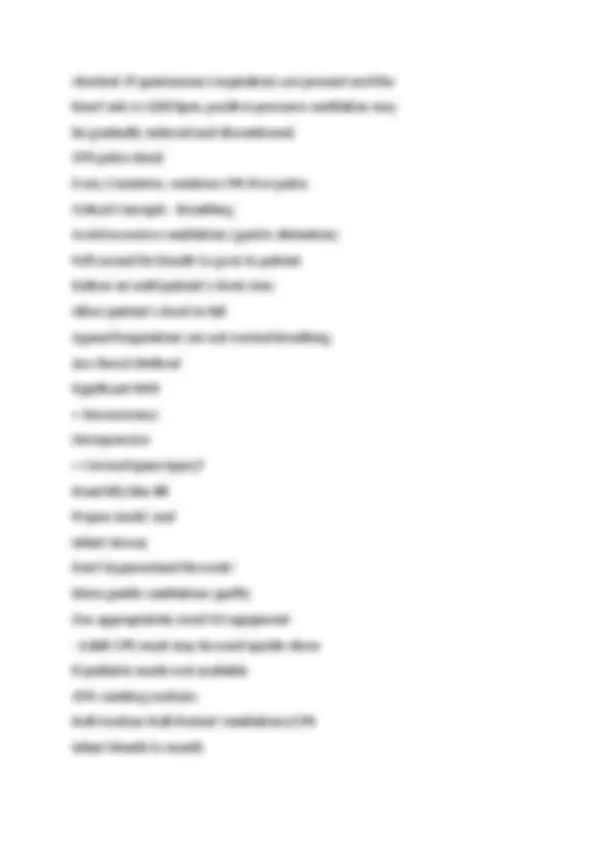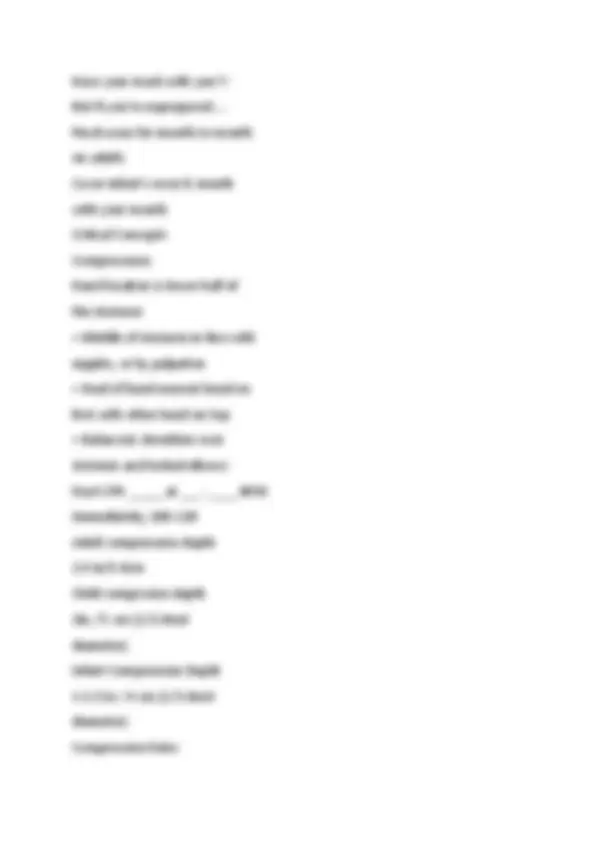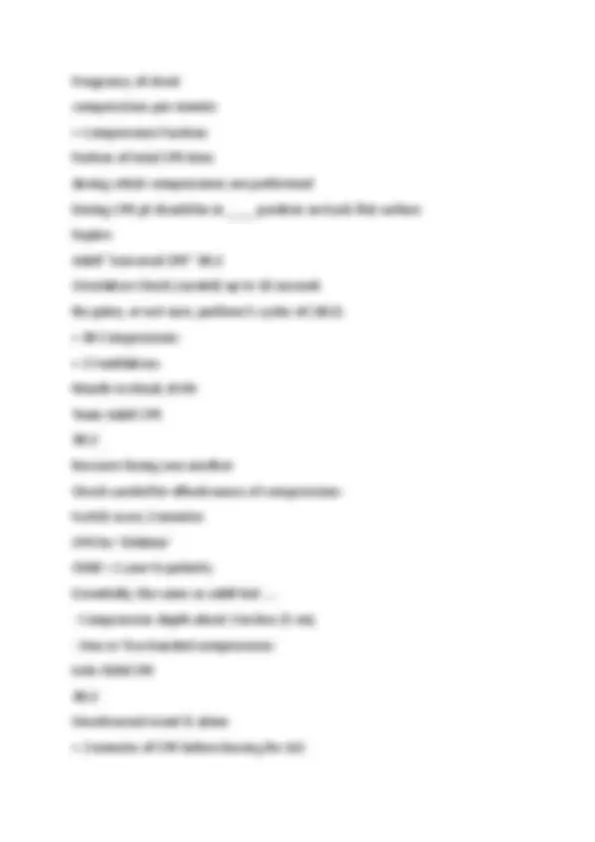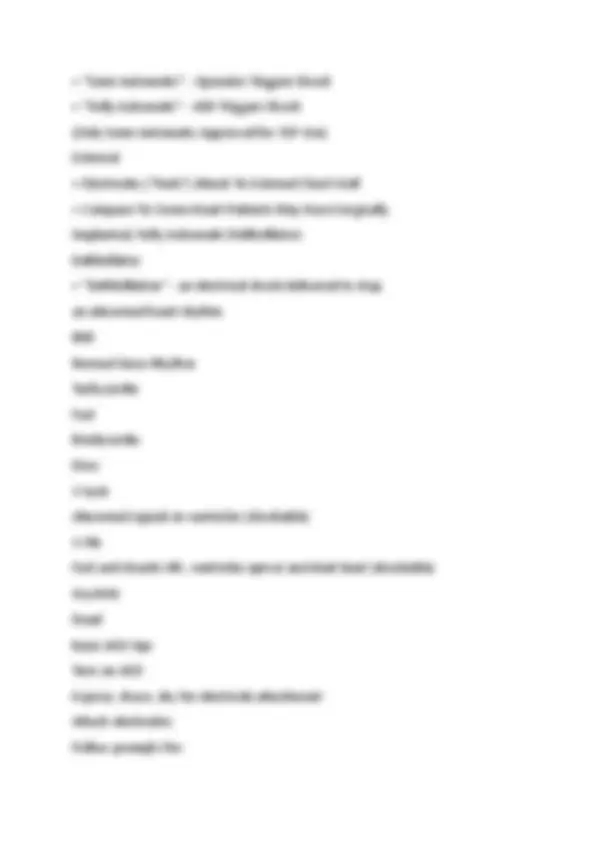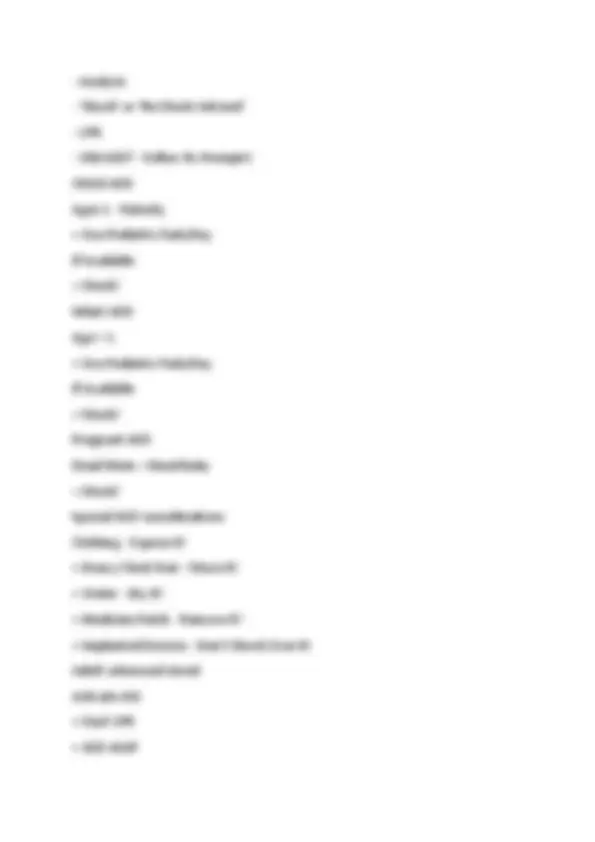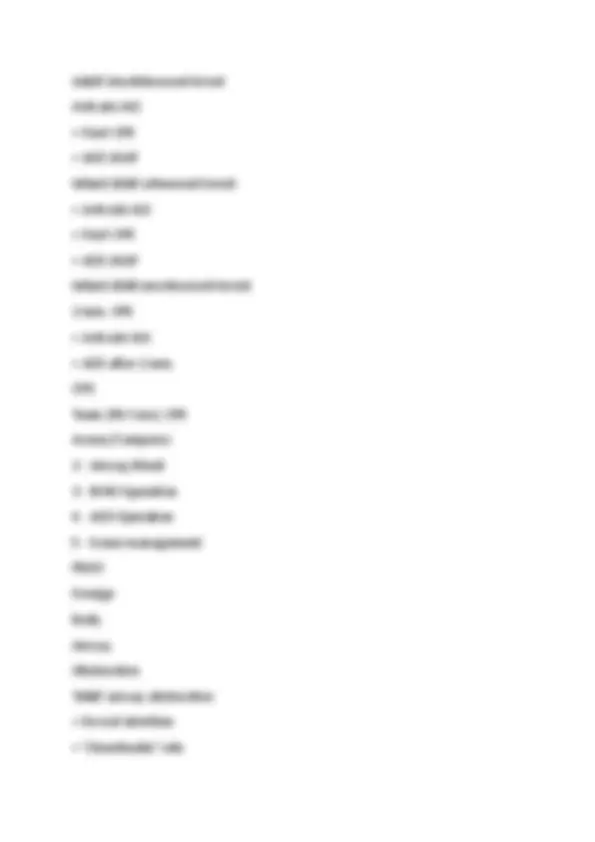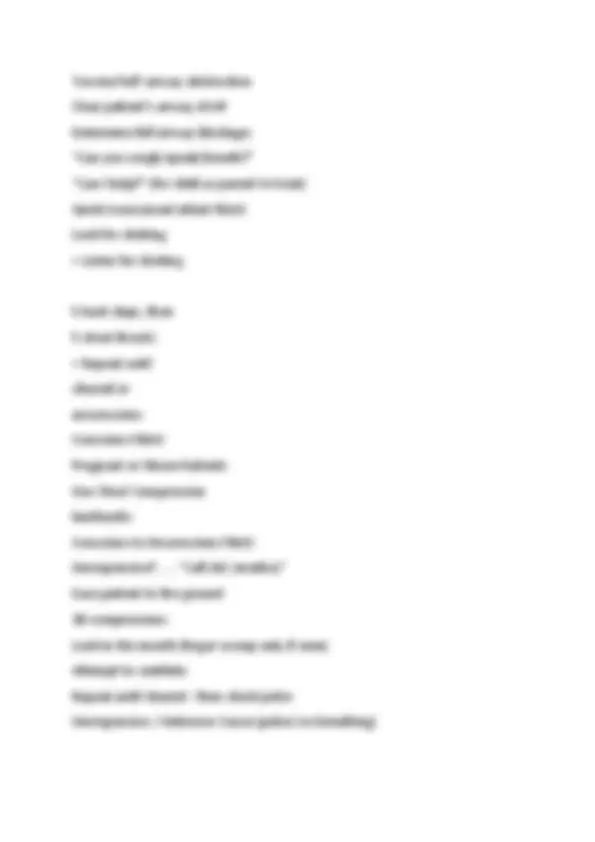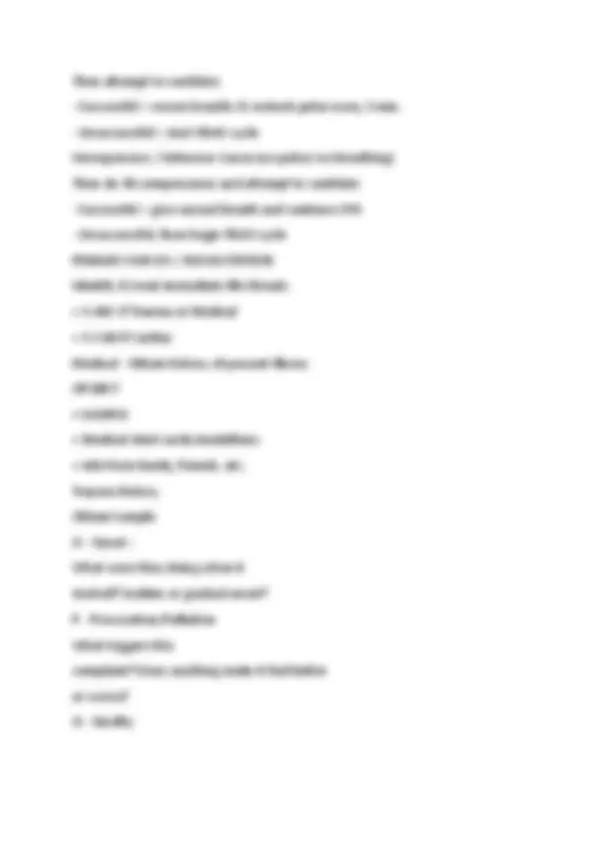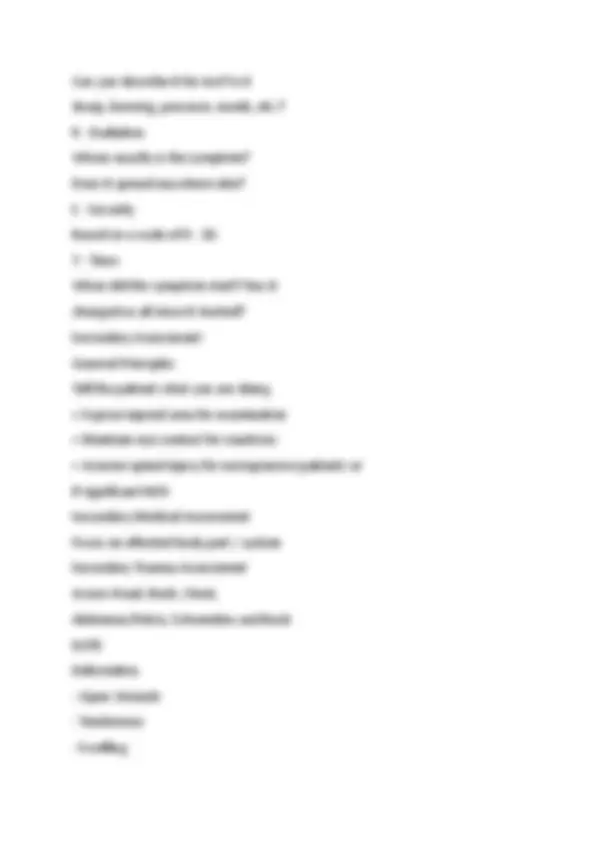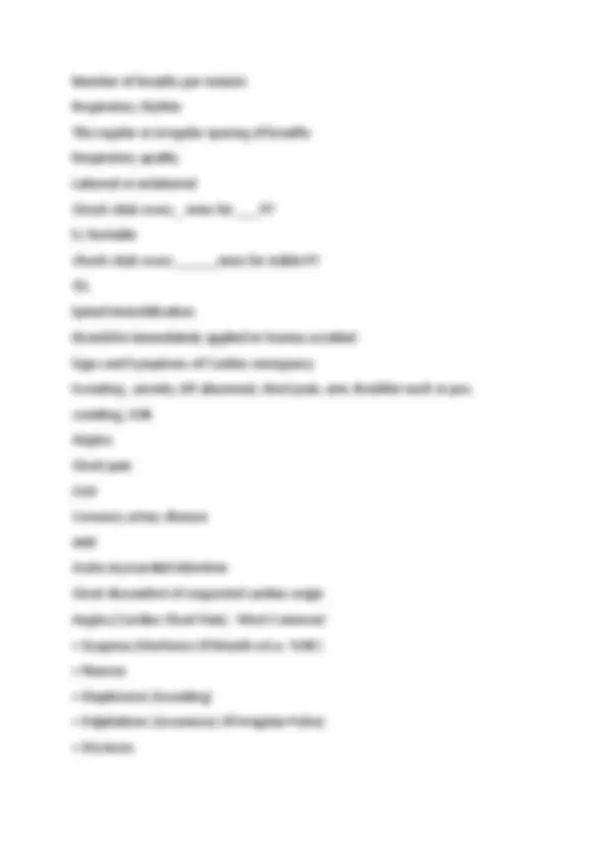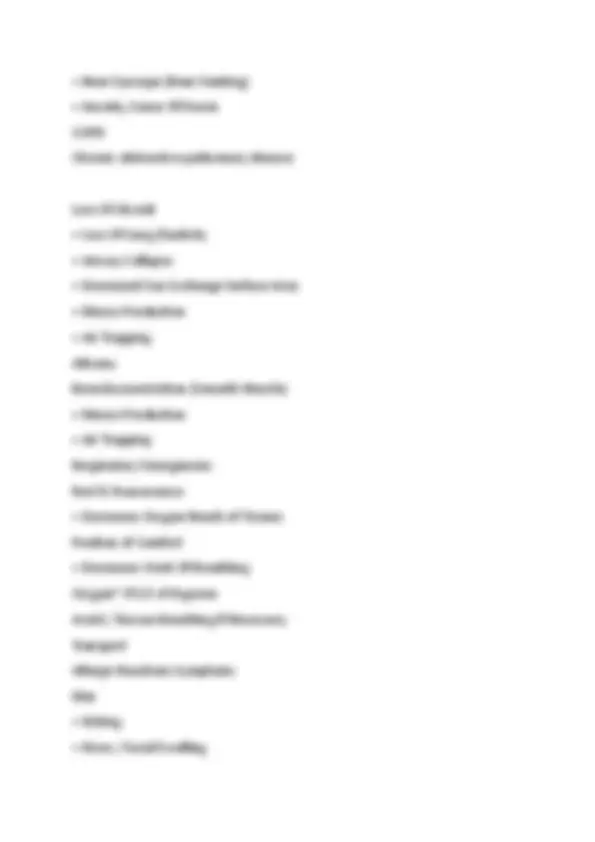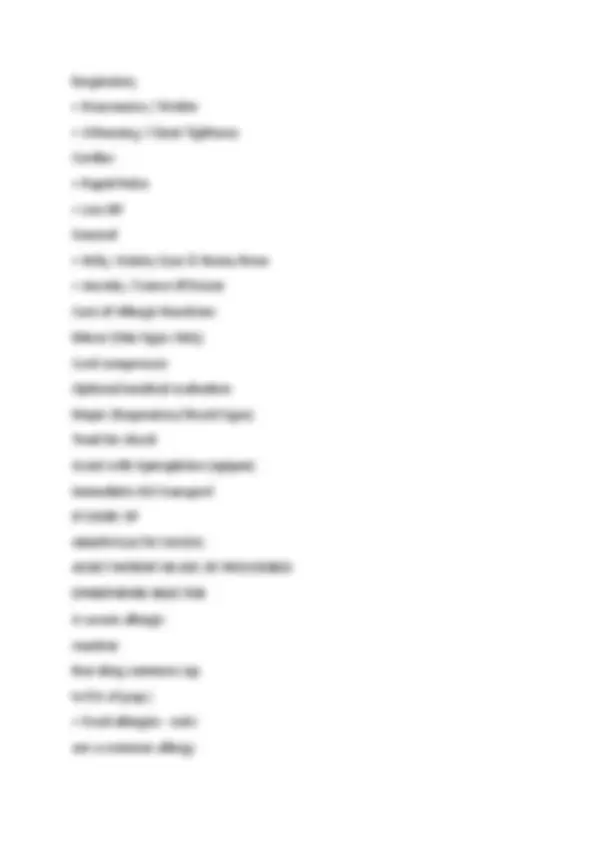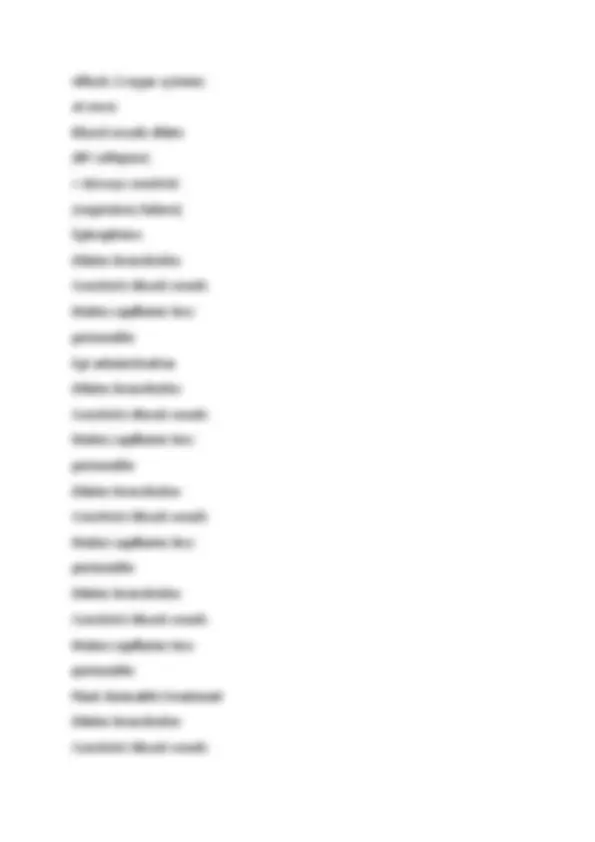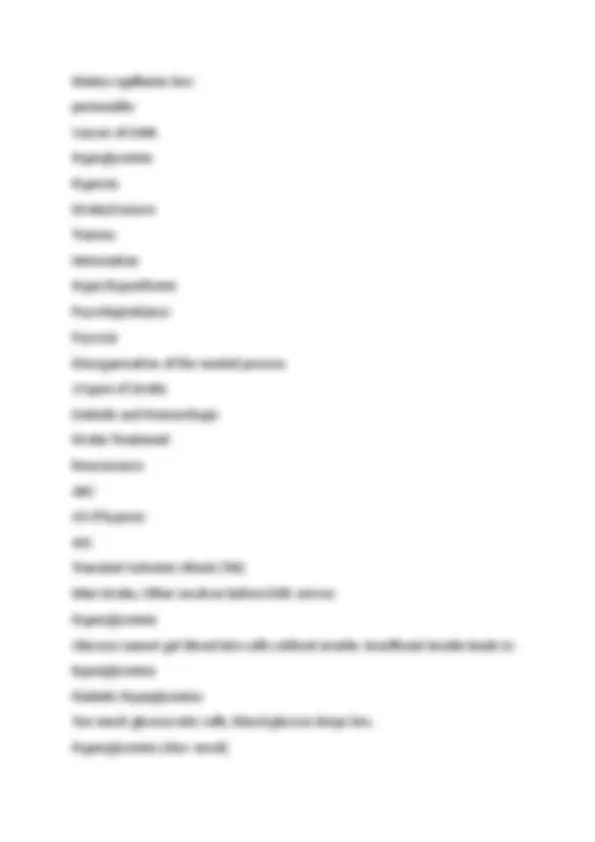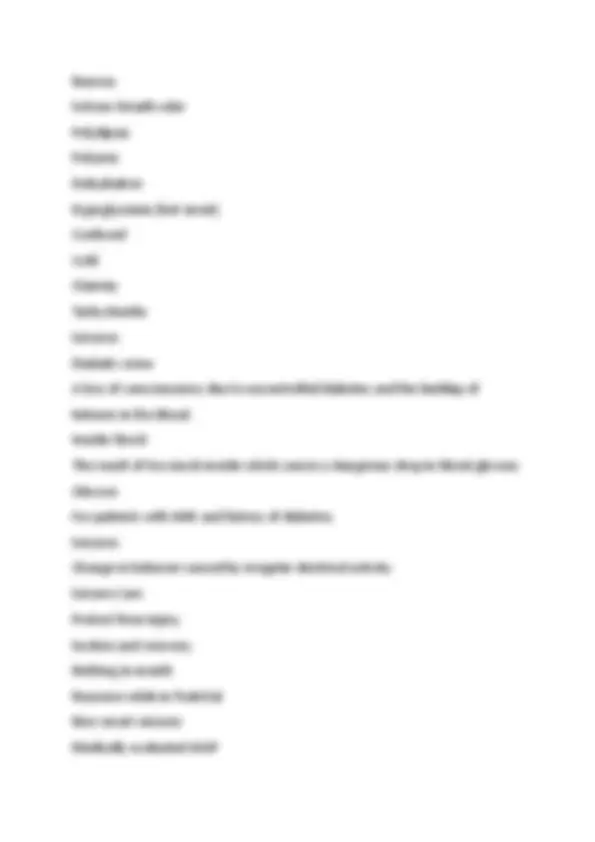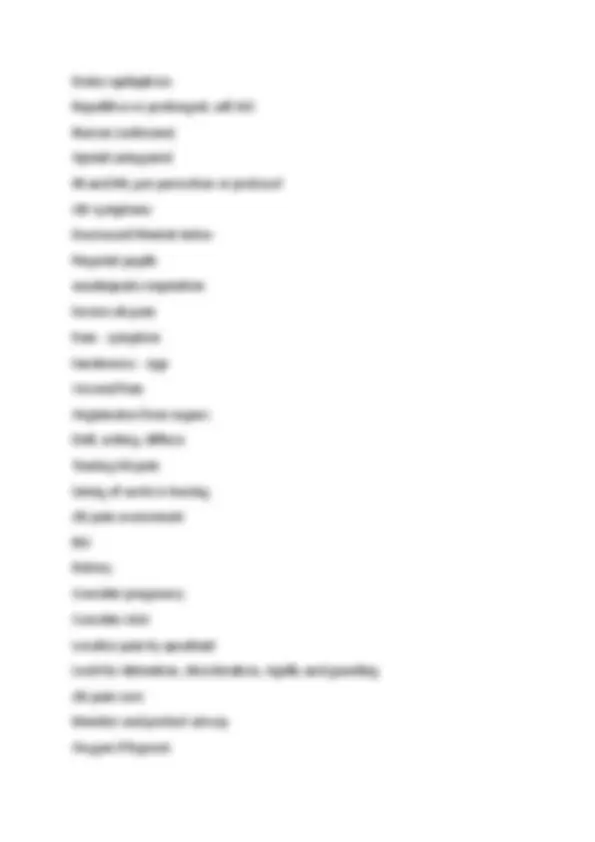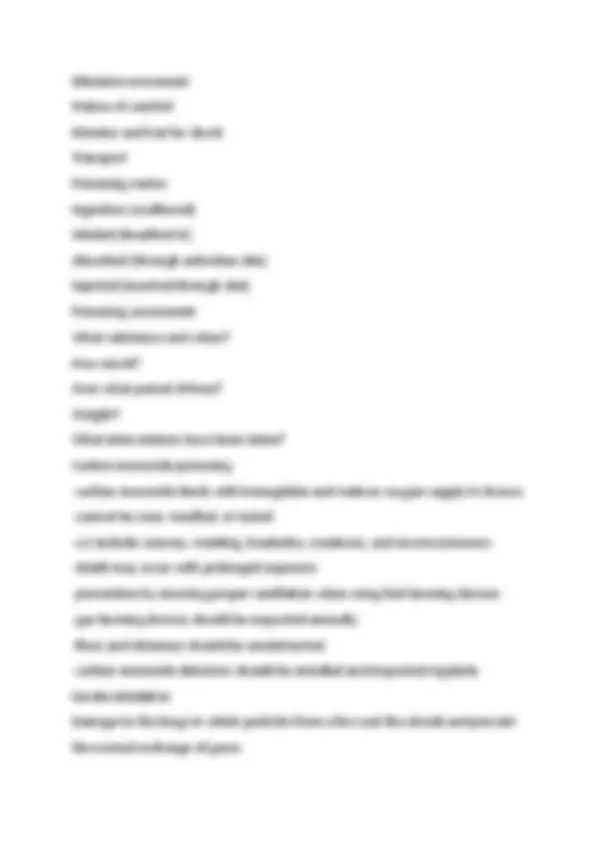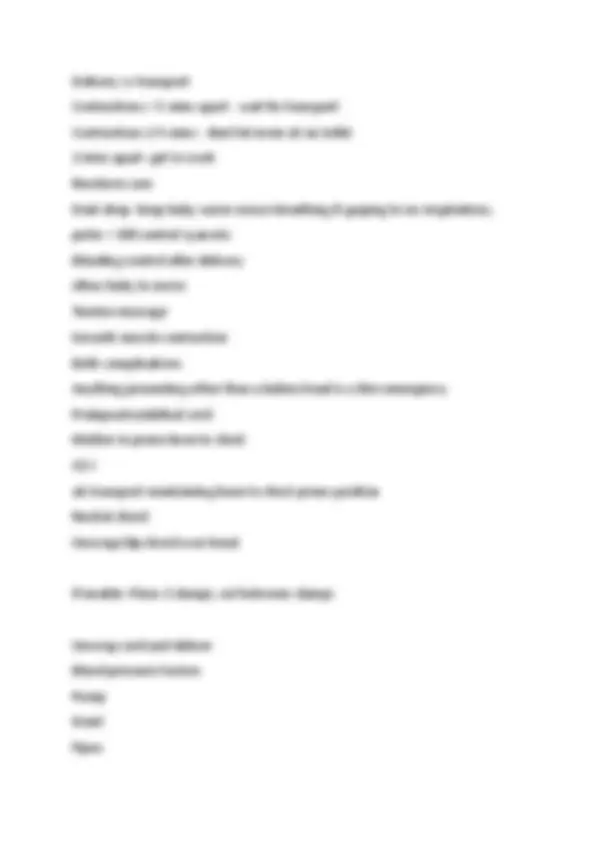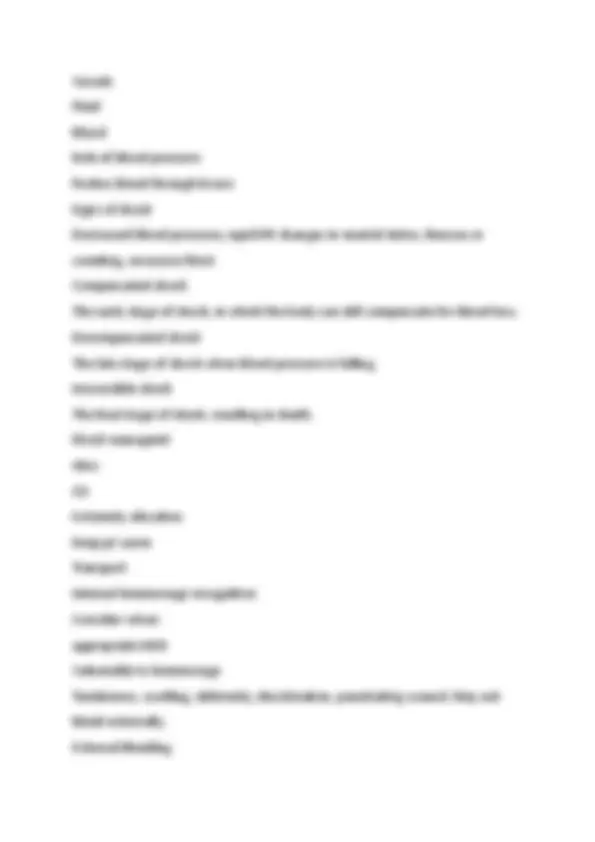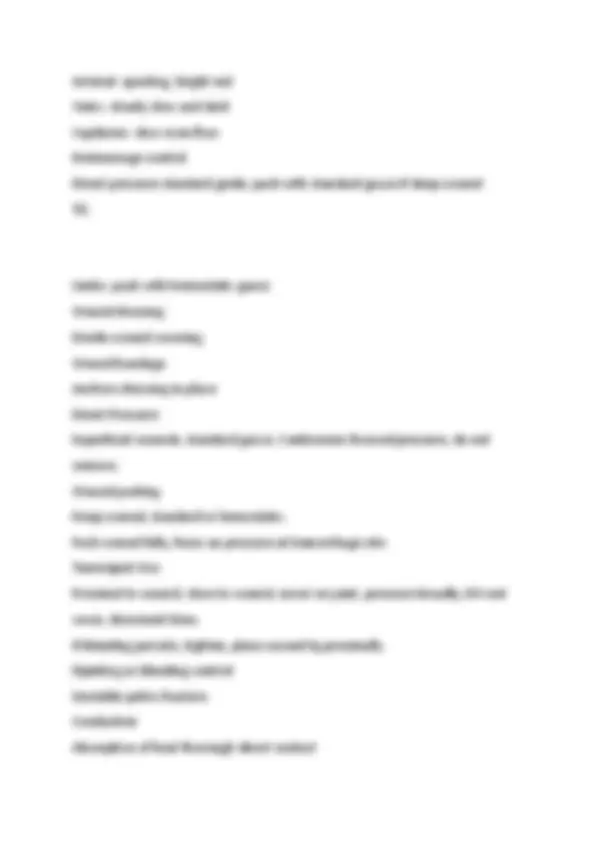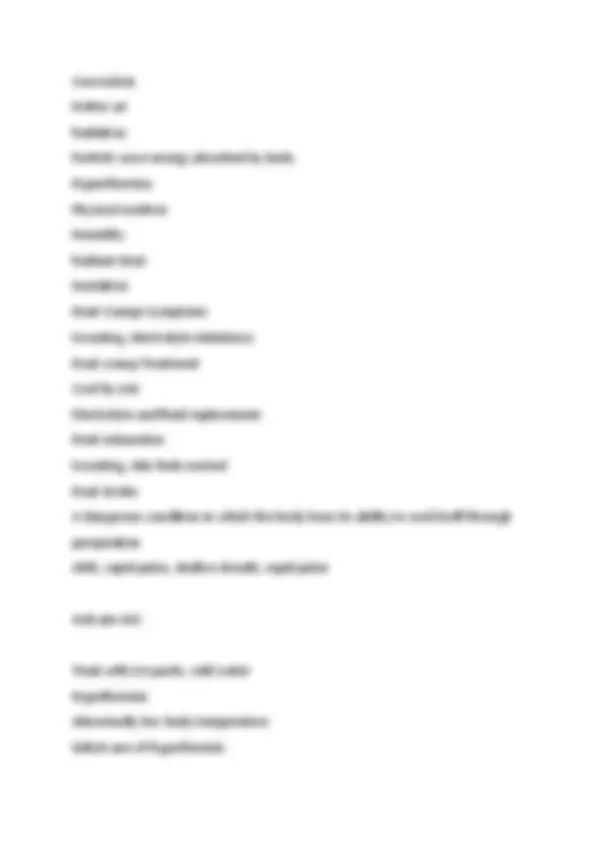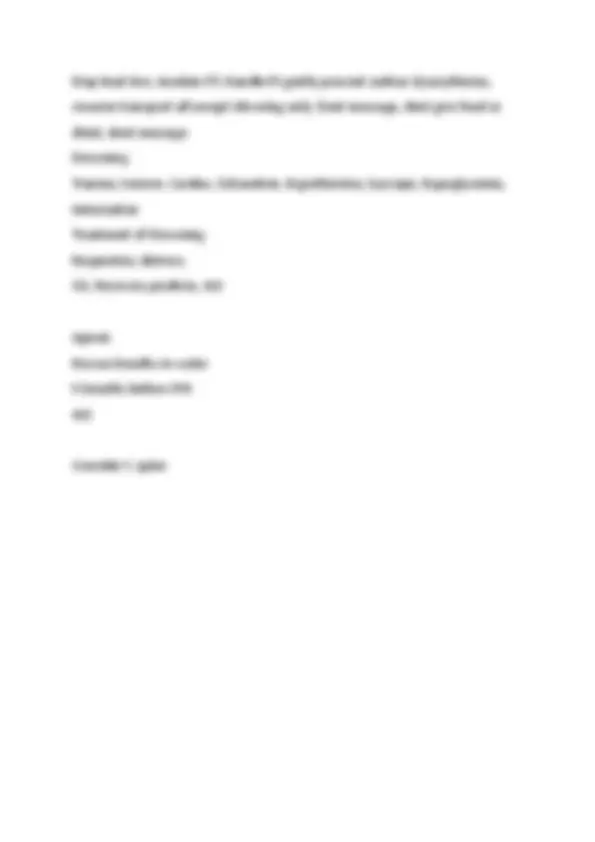Download Public Safety First Aid: Questions and Answers for Graded Exams and more Exams Nursing in PDF only on Docsity!
"Public safety first aid" The recogni7on of and immediate care for injury or sudden illness, including medical emergencies, by public safety personnel prior to the availability of medical care by licensed or cer7fied health care professionals PENMAN Scene Size Up P- Personal safety (BSI/PPE) E- Environment (Danger Zones) N- Number of pa7ents M- Mechanism of injury (MOI) / Nature of illness (NOI) A- Addi7onal resources N- Need for c-spine precau7ons / extrica7on BSI Body substance isola7on Need for Addi7onal Resources?
PSFA SLIDES 2024/
(QUESTIONS &
CORRECTANSWERS) GRADED
A+
- Fire?
- Hazmat?
- Power Co.?
- Traffic Control?
- Helicopter? Virus
- Needs a host cell
- Not sensi7ve to an7bio7cs Bacteria No host cell needed Sensi7ve to An7bio7cs Defenses Against Infec7on Physical Barriers
- Intact skin, mucous membranes Chemical Barriers
- Sweat, oil, tears, stomach acid 'Inflammatory' Response
- Rapid & nonspecific 'Immune' Response
- Delayed but specific (an7bodies) Chain of Transmission Infec7ous Agent (HAV)
- Reservoir (Infected Food Worker At ACUTE TACO CO.)
- Portal of Exit (Diarrhea... On His Unwashed Hands ☺)
- Means of Transmission (His Special 'Hand-Made' Taco)
- Portal of Entry (Your Mouth ☹) Modes of Transmission
SYMPTOMS: Abdominal pain, nausea, diarrhea (infec7ous), fa7gue, fever, jaundice Hep-B May be Acute (<6 mo.) Or Chronic
- Chronic cases prone to cirrhosis/cancer!
- Symptoms may not appear for years, but asymptoma7c pa7ents are s7ll infec7ous!
- 'Hardy' virus - survives outside the body Body Fluid Transmission
- Unprotected sexual contact
- Sharing needles
- Body fluid exposure
- Childbirth (that cute baby may be dangerous!) HIV Human immunodeficiency virus AIDS Acquired immune deficiency syndrome Lyme disease Tick-borne disease caused by the spirochete Borrelia burgdorferi. Tetnus Bacterial infec7on, causes painful muscle spasms and can lead to death, muscles can't relax When do you have a duty to act? On duty or iden7fiable Negligance Careless neglect, oeen resul7ng in injury Simple negligence
Lack of reasonable care Gross negligence Willful and criminal When is consent to treat implied? Assumed when a vic7m is not 'competent'
- altered/unresponsive mental status (e.g. Drugs, ETOH, head injury)
- legal capacity (e.g. Minors) When can pa7ents refuse care? Legal Capacity to Consent/Refuse
- Of legal age
- Emancipated minor Alert and Oriented
- Capable of Understanding Situa7on Fully Informed
- Understands the Situa7on
- Understand the Consequences of Refusing Care Advanced direc7ves include: DNR, POLST, Advanced direc7ves Cyanosis Bluish discolora7on of the skin Diaphoresis Profuse swea7ng Recovery posi7on A side-lying posi7on used to maintain a clear airway in unconscious pa7ents without injuries who are breathing adequately. Bodily cavi7es
Right Lower Quadrant (RLQ) Colon, Small intes7nes, major artery to veins and R leg, Ureter, Appendix L:ee Lower Quadrant (LUQ) Colon , Sm intes7nes, Major artery to lee leg, ureter Midline Aorta, pancreas, sm intes7nes, bladder, spine Skelital Muscle Volintary(controlled), Cardiac muscle Muscle of the heart Smooth muscle Involuntary muscle found inside many internal organs of the body Adequate Breathing? Look Does chest rise and fall equally? Breathing labored? What is the skin color? Listen Does air pass easily through nose & mouth? Any abnormal sounds?
- Wheezing
- Gurgling Respiratory Failure Gas exchange not enough to support life Respiratory Arrest Breathing stops Signs of Inadequate Breathing
Rate - Outside Normal Range (Fast or Slow) •Adults: 12-20/min. •Children: 15-30/min. •Infant: 25-50/min. Rhythm - Irregular Depth - Decreased Chest Expansion Inadequite Breathing Quality Abnormal breath sounds (Noisy, diminished, or absent)
- Asymmetrical chest expansion
- Increased breathing effort Signs of Inadequate Breathing (Infants/Children) Nasal flaring, grun7ng, seesaw breathing, retrac7ons Child vs adult airway Child had smaller mouth, more space taken up by lounge, trachea is narrower, cricoid car7lage is less rigid and developed, more eailty obstructed Bag-valve mask (BVM) A device with a one-way valve and a face mask aoached to a ven7la7on bag; when aoached to a reservoir and connected to oxygen, it delivers more than 90% supplemental oxygen. Inadequate Ar7ficial Ven7la7on
- no chest rise with breaths
- rate is too fast or too slow
- heart rate does not return to normal What to do if there is no chest rise with rescue breaths:
Supplumental Oxygen Given Only to Pa7ents Showing Signs/Symptoms of Hypoxemia per CSP Hypoxemia Protocol Supplemental Oxygen IS A DRUG That Conscious oxygen delivery: Conscious pa7ents: Nasal Cannula: 2-6 LPM Delivers 25% - 45% Oxygen Non-Rebreather Mask: 12-15LPM Delivers 80% - 95% Oxygen Uncopncious Supplumental oxygen delivery: BVM 15+ lpm, 100% o Nasal Cannula 25 - 45% 2 - 6LPM NRB 80 - 95% o 12 - 15 Lpm BVM Near 100% o2, 15 lpm How to set up o2: Hand Tighten Aoach Tubing Open Valve Select flow Apply to PT Oxygen Special Considera7ons
Leave in place under ordinary circumstances; remove if it blocks airway If a par7al plate becomes loose, leave it in place unless it causes a problem (It is some7mes difficult to obtain a good mask seal to the face without leaving these in place) Avoid hyperextension when opening the airway Avoid excessive pressure when ven7la7ng Gastric disten7on may be common Use pediatric sized equipment/adjuncts Cardiac Care
- Emphasis on Preven7on (airway emphasis)
- Early high-quality CPR
- Rapid ac7va7on of EMS
- Effec7ve ALS
- Integrated post-cardiac arrest care CPR "Cardiopulmonary resuscita7on" or "CPR" means establishing and maintaining an open airway, ensuring adequate respira7on either spontaneously or by use of rescue breathing, and ensuring adequate circula7on either spontaneously or by means of closed chest cardiac compression, according to standards promulgated by the American Heart Associa7on (AHA) and Emergency Cardiovascular Care (ECC)." X Control major bleed
checked. If spontaneous respira7ons are present and the heart rate is ≥100 bpm, posi7ve-pressure ven7la7on may be gradually reduced and discon7nued. CPR pulse check Every 2 minutes, con7nue CPR if no pulse Cri7cal Concepts - Breathing Avoid excessive ven7la7ons (gastric disten7on) Full second for breath to go in to pa7ent Deliver air un7l pa7ent's chest rises Allow pa7ent's chest to fall Agonal Respira7ons are not normal breathing Jaw thrust Method Significant MOI
- Unconscious/ Unresponsive
- Cervical Spine Injury? Head 7lt/chin-lie Proper mask/ seal Infant Airway Don't hyperextend the neck! More gentle ven7la7ons (puffs) Use appropriately sized O2 equipment
- Adult CPR mask may be used upside-down if pediatric masks not available CPR vomi7ng suc7ons Roll>Suc7on>Roll>Restart Ven7la7ons/CPR Infant Mouth to mouth
Have your mask with you!!! But if you're unprepared.... Pinch nose for mouth-to-mouth on adults Cover infant's nose & mouth with your mouth Cri7cal Concepts Compressions Hand loca7on is lower half of the sternum
- Middle of sternum in-line with nipples, or by palpa7on
- Heel of hand nearest head on first with other hand on top
- Balanced, shoulders over sternum and locked elbows Start CPR _____ at ___ - ____ BPM Immediately; 100- 120 Adult compression depth 2.4 in/5-6cm Child comprssion depth 2in / 5 cm (1/3 chest diameter) Infant Compression Depth 1 1⁄2 in / 4 cm (1/3 chest diameter) Compression Rate:
Witnessed event:
- Ac7vate ALS (leave if necessary) then CPR/AED If heart rate is <60 beats per minute (bpm), with signs of poor perfusion, start CPR Team Child CPR Rescuers on opposite sides of pa7ent Check caro7d for effec7veness of compressions Switch every 2 minutes Infant CPR Infants - Up to 1 year of age Indica7ons for CPR:
- Same as child
- <60bpm/poor perfusion Circula7on check at brachial artery Infant CPR Compressions (Two rescuer) 'Two thumb encircling hands' technique
- Switch to 15:2 ra7o
- Switch roles every 2 minutes Neonatal CPR Neonate ≤ 28 days (1 month) of age
- Adequate ven7la7on is THE primary concern!
- Assisted ven7la7ons indicated if:
- HR < 100
- Gasping or apnea
- Chest compressions indicated if:
- HR <60 bpm despite adequate assisted ven7la7on for 30 seconds
- Circula7on check at brachial artery Neonatal CPR Compressions Coordinate chest compressions with ven7la7ons at a ra7o of 3:1 and a rate of 120 events/min. To achieve approximately 90 compressions and 30 breaths/min. When do you use an AED on an adult?
- Unresponsive
- Breathless
- Pulseless When do you use an AED on an infant/child? Pulse < 60 bpm AND
- S/S of Hypoperfusion "X-CAB" X - exsanguina7ng Hemorrhage C - Circula7on
No Pulse? Chest Compressions Defibrilla7on! A - Airway B - Breathing AED Automated (Refers to rhythm analysis)
- AED (not operator) determines need for defibrilla7on
- Analysis
- 'Shock' or 'No Shock Advised'
- CPR
- Old AED? - Follow Its Prompts! CHILD AED Ages 1 - Puberty
- Use Pediatric Pads/Key If Available
Shock! Infant AED Age < 1
- Use Pediatric Pads/Key If Available
Shock!
Pregnant AED Dead Mom = Dead Baby
Shock! Special AED considera7ons Clothing - Expose It!
- Heavy Chest Hair - Shave It!
- Water - Dry It!
- Medicine Patch - Remove It!
- Implanted Devices - Don't Shock Over It! Adult witnessed Arrest Ac7vate ALS
- Start CPR
- AED ASAP
Adult Unwhitnessed Arrest Ac7vate ALS
- Start CPR
- AED ASAP Infant/child witnessed Arrest
- Ac7vate ALS
- Start CPR
- AED ASAP Infant/child unwitnessed Arrest 2 min. CPR
- Ac7vate ALS
- AED aeer 2 min. CPR Team (Pit Crew) CPR Assess/Compress 2 - Airway/Mask 3 - BVM Opera7on 4 - AED Opera7on 5 - Scene management FBAO Foreign Body Airway Obstruc7on 'Mild' airway obstruc7on
- Do not interfere
- 'Cheerleader' role

